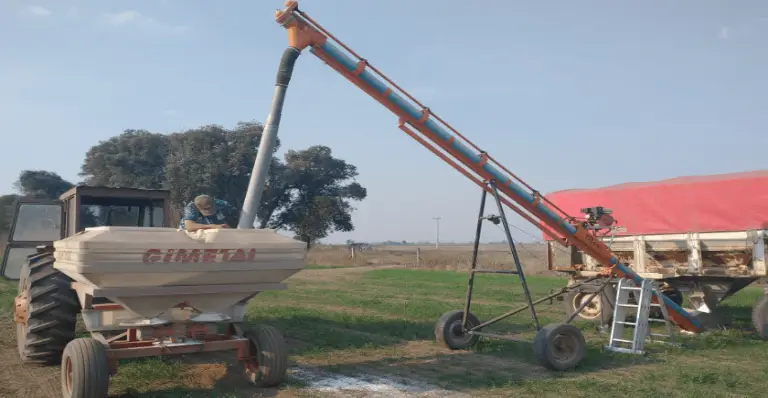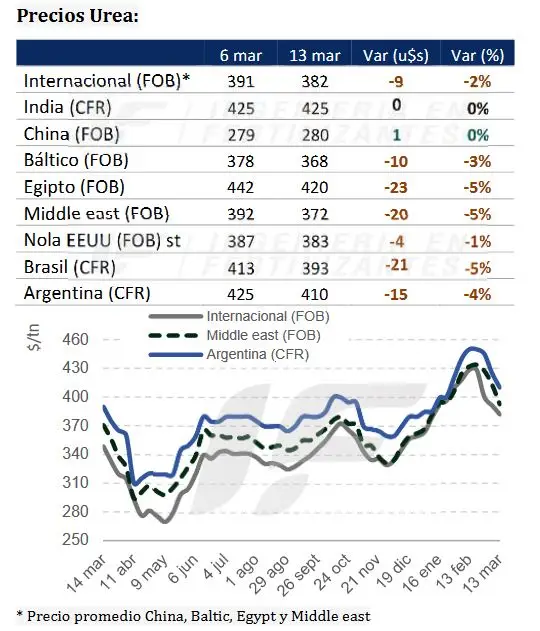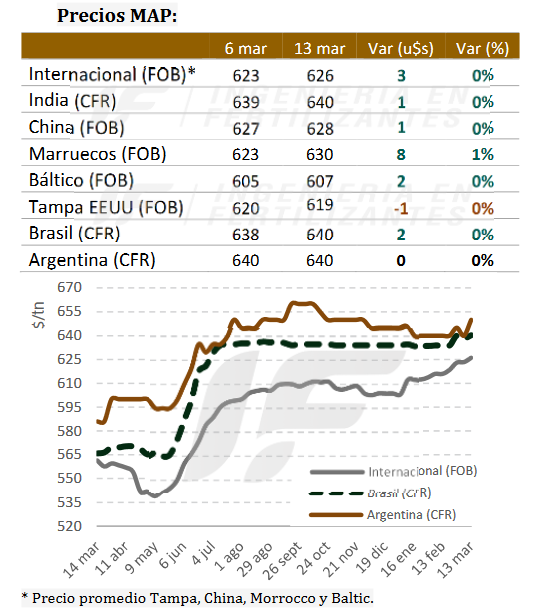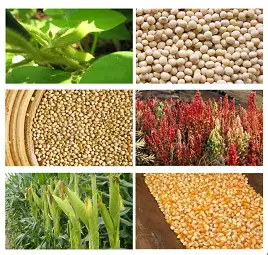
Good news for agricultural companies in view of the planning of the fine season 2025/26: international prices of nitrogen fertilizers are in a downward phase.
‘The urea market is on a downward trend in the absence of the Indian tender. Producers in the Middle East, the Baltics and the Black Sea have had to cut prices to attract interest from buyers,’ says the latest report from the consultancy IF Fertilizer Engineering.
‘The resumption of urea production in Iran after three months of inactivity was highlighted, which will increase global supply from April onwards,’ it adds.

The fall in international prices was strongly reflected in Brazil, where import values (CFR) fell by around $20/tonne in the last week on higher available supply and still subdued domestic demand.
However, prices of nitrogen fertilizers in the Argentine wholesale market did not reflect the dynamics present at the global level. ‘This is since prices in Argentina did not fully follow the international rise that occurred from December until a fortnight ago. As a result, the current drop in the international market allows the replacement cost in CFR to remain aligned with local prices, standing at around 510 u$s/tonne,’ the report states.
Meanwhile, the world phosphate market shows rising prices due to global supply shortages and uncertainty over Chinese exports, as well as a rebound in the value of Sulphur.

Morocco remains a key player in global supply, while US diammonium phosphate (DAP) prices remained firm and monoammonium (MAP) imports in Brazil revived.

‘The outlook for the coming weeks will depend largely on China’s reopening to exports, which could lead to an adjustment in global prices,’ the paper projects.
In any case, the decline in the global market has not yet been fully passed on to prices, which remain relatively competitive compared to the international market. However, some importers are already adjusting their references to values of 800 u$s/tonne, reflecting replacement costs.
Source: Valor Soja
Profertil resumed production of granulated urea after the interruption caused by the storm

Profertil, the only granulated urea factory in Argentina, announced on Monday that it has resumed production of the fertiliser thanks to the re-establishment of natural gas supply.
Profertil had had to interrupt operations after the climatic, humanitarian and productive disaster caused by the storm of March 7.
The company had communicated at the time that ‘as a result of the severe flooding caused by the storm, the production of urea at the Profertil production plant, located in Ingeniero White, Bahía Blanca, was stopped due to the lack of natural gas supply, which is an essential input for Profertil’s operations.
The Municipality of Bahía Blanca officially reported that the disaster caused the death of 16 people and the need to evacuate 963 local residents.
While the theoretical capacity of the Profertil plant is 1.32 million tonnes per year, in 2022, thanks to a series of improvements that helped increase efficiency, they managed to reach a record 1.40 million tonnes per year.
Profertil, which is equally owned by Canada’s Nutrien and Argentina’s YPF, carries out regularly scheduled technical shutdowns for equipment maintenance, so what happened this month, while unplanned, is nothing new.
Source: bichos de campo

ARGENTINA MAIN CROPS OVERVIEW:
SOYBEANS: During the last few days, heavy rainfall has been recorded, which, combined with the accumulated precipitation from previous weeks, has caused flooding in various areas of the agricultural region, except in the northeast, which, having been excluded from the rains, remains under drought conditions. In this context, soybean crops have experienced contrasting scenarios depending on the region. While in Chaco and northern Santa Fe, the transition through the critical growth period under heat and water stress has resulted in sparse stands, significant plant loss, and a reduction in the yield potential of early-planted soybeans, in flooded areas, potential losses due to anoxia are being assessed. Nonetheless, in the core production zones, the rainfall in February and early March has favored grain filling in early planted soybeans, positively impacting yields. Regarding late-planted soybeans, at the national level, nearly 50% of the fields have reached the full pod stage, and 8 out of 10 hectares present favorable moisture conditions. In this context, production’s projection stands at 49.6 MTn.
CORN: At the same time, the rains have also hindered the progress of the corn harvest for grain across much of the central region, with an inter-weekly progress of only 1.4 percentage points (p.p.). As of today, 8.1% of the national area has been harvested, exceeding the previous season’s progress by 5.1 p.p., with an average yield of 78.8 qq/Ha. Regarding late-planted corn, a significant recovery has been observed in Córdoba and much of Buenos Aires Province. However, some areas of the latter have suffered flooding, which could lead to acreage losses. On the other hand, rains remain scarce in the central-northern region of Santiago del Estero and in the agricultural region of Chaco, significantly affecting production in these areas. In this context, production projection is maintained at 49 MTn.
SUNFLOWER: The sunflower harvest has already covered 21.6% of the suitable area, after an inter-weekly progress of 4 p.p. As a result of the rainfall, delays have increased compared to the previous cycle and the U5C average, due to excessive soil moisture preventing machinery from entering the fields (-21.2 and -34 p.p., respectively). Additionally, issues such as grain sprouting and an increase in disease incidence, leading to plant lodging and head rot, have been recorded. However, in hilly areas of the southern agricultural region, harvesting has progressed on elevated fields with encouraging results, while at the same time, terrain preparation is underway in low-lying areas to resume collection. If favorable conditions prevail in the coming weeks, the evaluation of damages caused by the storm will be completed, and the harvest will resume.
SORGHUM: The sorghum harvest has progressed slowly over the past fifteen days, reaching 8.8% of the estimated total area, with an average yield of 36.1 qq/Ha. The lack of rainfall in the main sorghum-producing regions, such as the NEA and central-northern Santa Fe, has affected early planted fields and is beginning to impact late plantings. In the central agricultural region, yields have been good so far, averaging around 55 qq/Ha. However, in fields that have received abundant precipitation, sprouting problems have been observed, which could hinder harvesting operations. In this context, production’s projection is maintained without changes at 3.3 MTn..
Source: Buenos Aires Grain Stock

